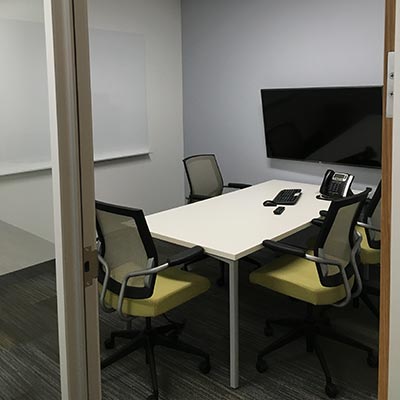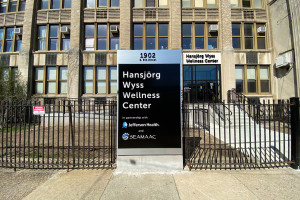How to Make Your Offices Friendly for Boomers and Millennials

Photo | Brian Howard
This is a Biz Philly guest column.
Recently, Matt Burns, CEO and president of Burns Engineering, embarked on a move to new headquarters at 20th and Market Streets. As head of the 50-year-old design and management consulting company, Burns had undertaken a major move before, but this time it presented an unexpected challenge: generational issues.
Burns needed a plan that would take him 10 years into the future, spanning the length of his lease. But his older engineers wanted to keep the corner offices they had worked so hard for. They wanted big tables for blueprints and plenty of storage space for their 20-year-old files. Meanwhile the current younger employees — and those who would be recruited in the years ahead — preferred plenty of open space, natural light, and collaborative spaces instead of offices and white boards for projecting drawings.

The café” at Burns’ Philadelphia headquarters opens onto a learning and seminar space. Photo | Brian Howard
To magnify the situation, competitors were constantly trying to poach his young engineers, so Burns had to provide the kind of environment that would appeal to them as well as retain them. Millennials are the largest generation in the workplace, and their sheer numbers mean they will eventually be taking over the leadership reins. It’s the perfect storm that can turn the office world upside down.
Instead of telling employees what is going to happen, leadership should engage them in the process. In this case, Burns surveyed his employees for opinions and input on plan layout and preferences. The employees stayed involved along the way, spilling out anxieties and personal concerns. They gave opinions on everything from having to walk farther to the new location, to the need for a café. The process revealed that employees, especially longtime ones, welcomed the idea of forming mentoring relationships. Younger employees typically consider mentoring as a sign of commitment to their development, and that has a positive impact on satisfaction and longevity.

Collaboration space. Photo | Brian Howard
In the end, both younger and older generations were accommodated. Private offices were constructed on the interior core to meet older engineers’ preferences, and open spaces were designed on the perimeter, providing more natural light and connection with the outdoors, which Millennials prefer. Privacy pods allowed for quiet work. The new plan emphasizes collaborative space, stand-up meeting areas and a café that enables more spontaneous interactions across departments. The workforce appears quite satisfied with the new arrangement. The open space has its own buzz and encourages relationship building, engagement and collaboration.
Burns successfully bridged generational needs and preferences by addressing the human dynamics of the move. But you don’t have to have a move on the horizon to consider how to address generational workspace preferences, communication and behavioral differences.
In my work with organizations of all sizes, I encourage the use of two approaches to bring generations onto the same plane and build respect for each other in the process.
The first is two-way mentoring. In traditional mentoring, the experienced older person takes the younger employee under his or her wing, giving advice on how to succeed. Two-way mentoring differs in that the two people in the relationship are expected to contribute equally. The older may give advice on organizational politics, communications strategies, etc., and the younger can contribute ideas on working collaboratively (a Millennial skill), technology, social media platforms, etc. When effort and contributions are made by both sides, generational respect is built.
Two-way mentoring doesn’t have to involve just two people. Many Millennials prefer mentoring circles where a number of younger people work with one senior leader. The younger participants in the circles see this style as more democratic since more of them can benefit from senior wisdom.
The second method is quite simple and can be used to improve communication, understanding and teamwork. It involves a three-part questioning technique. When either an older or younger person genuinely wants to know why the other person approaches an issue or challenge in the way they do, they can ask in this way:
1. Open by saying, “This is how I’ve always done this (task)”
2. Then say, “However, I’ve noticed you do it this way” (quick description of a different way)
3. Finish with, “Can you tell me why you approach it your way?”
Then just listen.
This only works if the questioner truly wants to know why the other person approaches a situation differently, then really listens. The goal is to open a dialogue to discover the merits of a different thought process, not prove right or wrong.
Strategies like these help build real connections and meaningful conversation, which will ultimately lead to finding common ground. By respecting each generation’s distinct needs, preferences and differences, companies can build a collaborative work environment and make great strides in closing the generational gap.
Suzanne F. Kaplan, president of Talent Balance, consults and speaks about the disruptive differences in the multi-generational workforce and how to develop common ground for bottom-line operational improvement.


